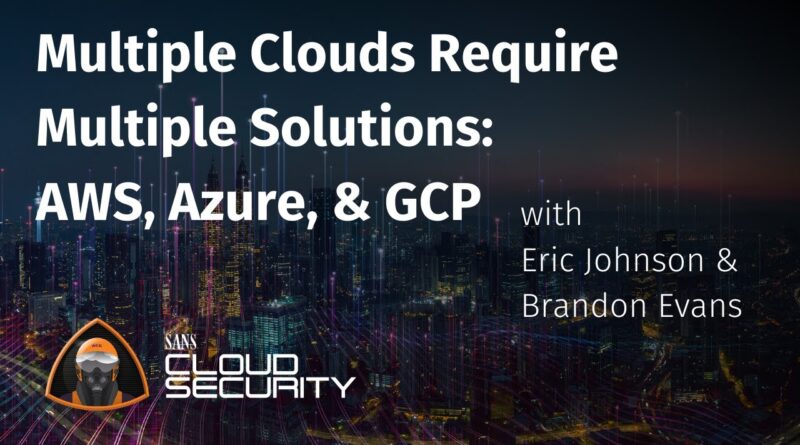Multiple Clouds Require Multiple Solutions: AWS, Azure, & GCP
Overview
Organizations in every sector are increasingly adopting cloud offerings to build their online presence. However, although cloud providers are responsible for the security of the cloud, their customers are responsible for what they do in the cloud. Unfortunately, the providers have made the customer’s job difficult by offering many services that are insecure by default. Worse yet, with each provider offering hundreds of different services and with many organizations opting to use multiple providers, security teams need a deep understanding of the underlying details of the different services in order to lock them down. As the landscape rapidly evolves and development teams eagerly adopt the next big thing, security is constantly playing catch-up in order to avert disaster.
The Big 3 cloud providers alone provide more services than any one company can consume. As security professionals, it can be tempting to limit what the developers use to the tried-and-true solutions of yesteryear. Unfortunately, this approach will inevitably fail as the product development organization sidelines a security entity that is unwilling to change. Functionality drives adoption, not security, and if a team discovers a service offering that can help get its product to market quicker than the competition, it can and should use it. SEC510 gives you the ability to provide relevant and modern guidance and guardrails to these teams to enable them to move both quickly and safely.
Join Brandon and Eric in this webcast as they walk through the details of the new 5-day SEC510: Public Cloud Security: AWS, Azure, and GCP course.
SEC510 provides cloud security practitioners, analysts, and researchers with an in-depth understanding of the inner workings of the most popular public cloud providers: Amazon Web Services (AWS), Microsoft Azure, and Google Cloud Platform (GCP). Students will learn industry-renowned standards and methodologies, such as the MITRE ATT&CK Cloud Matrix and CIS Cloud Benchmarks, then apply that knowledge in hands-on exercises to assess a modern web application that leverages the cloud-native offerings of each provider. Through this process, students will learn the philosophies that undergird each provider and how these have influenced their services.
Speaker Bios
Eric Johnson
Eric is a Co-founder and Principal Security Engineer at Puma Security and a Senior Instructor with the SANS Institute. His experience includes cloud security assessments, cloud infrastructure automation, static source code analysis, web and mobile application penetration testing, secure development lifecycle consulting, and secure code review assessments. Eric is the lead author and an instructor for SEC540: Cloud Security and DevOps Automation, a co-author and instructor for both the brand new SEC510: Public Cloud Security: AWS, Azure, and GCP, and the upcoming SEC584: Cloud Native Security: Defending Containers & Kubernetes. Additionally, Eric is a SANS Security Awareness Developer Training Advisory Board Member and SANS Analyst for Application Security and DevSecOps Surveys. Read more about Eric at www.sans.org/profiles/eric-johnson.
Brandon Evans
Brandon works for Zoom Video Communications, in which he leads their internal Application Security training. As an application developer for most of his professional career, he moved into security full-time largely because of his many formal trainings through SANS. He’s a contributor to the OWASP Serverless Top 10 Project and a co-leader for the Nashville OWASP chapter. Brandon is lead author for the new SEC510: Public Cloud Security: AWS, Azure, and GCP and a contributor and instructor for SEC540: Cloud Security and DevOps Automation. Read more about Brandon at www.sans.org/profiles/brandon-evans.
source by SANS Cloud Security
simple network management protocol



